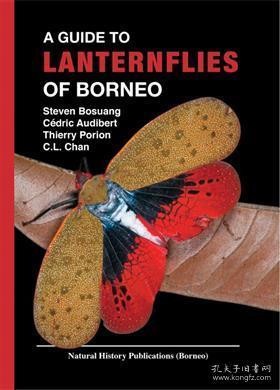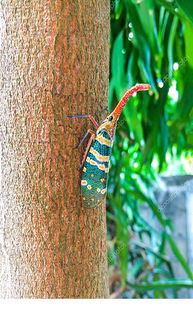
Do Spotted Lanternflies Bite?
Spotted lanternflies, known scientifically as Lycorma delicatula, have become a significant pest in various regions, particularly in the northeastern United States. One of the most common questions about these insects is whether they bite. Let’s delve into this topic and explore the various aspects surrounding the biting behavior of spotted lanternflies.
Understanding the Spotted Lanternfly

Before we address the biting question, it’s essential to understand the spotted lanternfly. These insects are large, with a wingspan of about 1.5 to 2 inches. They have distinctive black and white patterns on their wings, which are visible when they are at rest. Spotted lanternflies are native to China, but they have spread to other parts of the world, including the United States, where they have become a significant agricultural pest.
Do Spotted Lanternflies Bite?

Contrary to popular belief, spotted lanternflies do not bite humans. They are not blood-sucking insects like mosquitoes or ticks. Instead, they feed on the sap of trees and plants, which can cause significant damage to agricultural crops and native vegetation.
How Do Spotted Lanternflies Feed?

Spotted lanternflies have a long, straw-like mouthpart called a proboscis, which they use to pierce the bark of trees and plants. They then suck out the sap, which is their primary food source. This feeding behavior can lead to the weakening and death of affected plants, as the sap is essential for their growth and survival.
Do Spotted Lanternflies Bite Plants?
While spotted lanternflies do not bite plants, their feeding behavior can cause significant damage. The insects insert their proboscis into the plant’s vascular system, which can lead to the loss of sap and weaken the plant. This can result in stunted growth, leaf discoloration, and even plant death.
Are Spotted Lanternflies Harmful to Humans?
Although spotted lanternflies do not bite humans, they can be a nuisance. Their presence can lead to the destruction of trees and plants, which can impact the environment and local ecosystems. Additionally, the sticky substance they excrete, known as honeydew, can attract other insects, such as ants and wasps, which can become a problem for homeowners.
How to Control Spotted Lanternflies
Controlling spotted lanternflies involves a combination of methods, including biological control, physical removal, and chemical treatments. Here are some strategies to consider:
| Method | Description |
|---|---|
| Biological Control | Introducing natural predators, such as lacewings and ladybugs, which feed on spotted lanternflies. |
| Physical Removal | Manually removing spotted lanternflies from trees and plants using a vacuum or a damp cloth. |
| Chemical Treatments | Applying insecticides or horticultural oils to trees and plants to kill spotted lanternflies and their eggs. |
It’s important to follow the instructions on insecticides and horticultural oils carefully to ensure they are used safely and effectively.
Conclusion
In conclusion, spotted lanternflies do not bite humans. However, their feeding behavior can cause significant damage to trees and plants, impacting the environment and local ecosystems. Understanding the behavior and control methods of these insects can help homeowners and agriculturalists manage their populations effectively.



